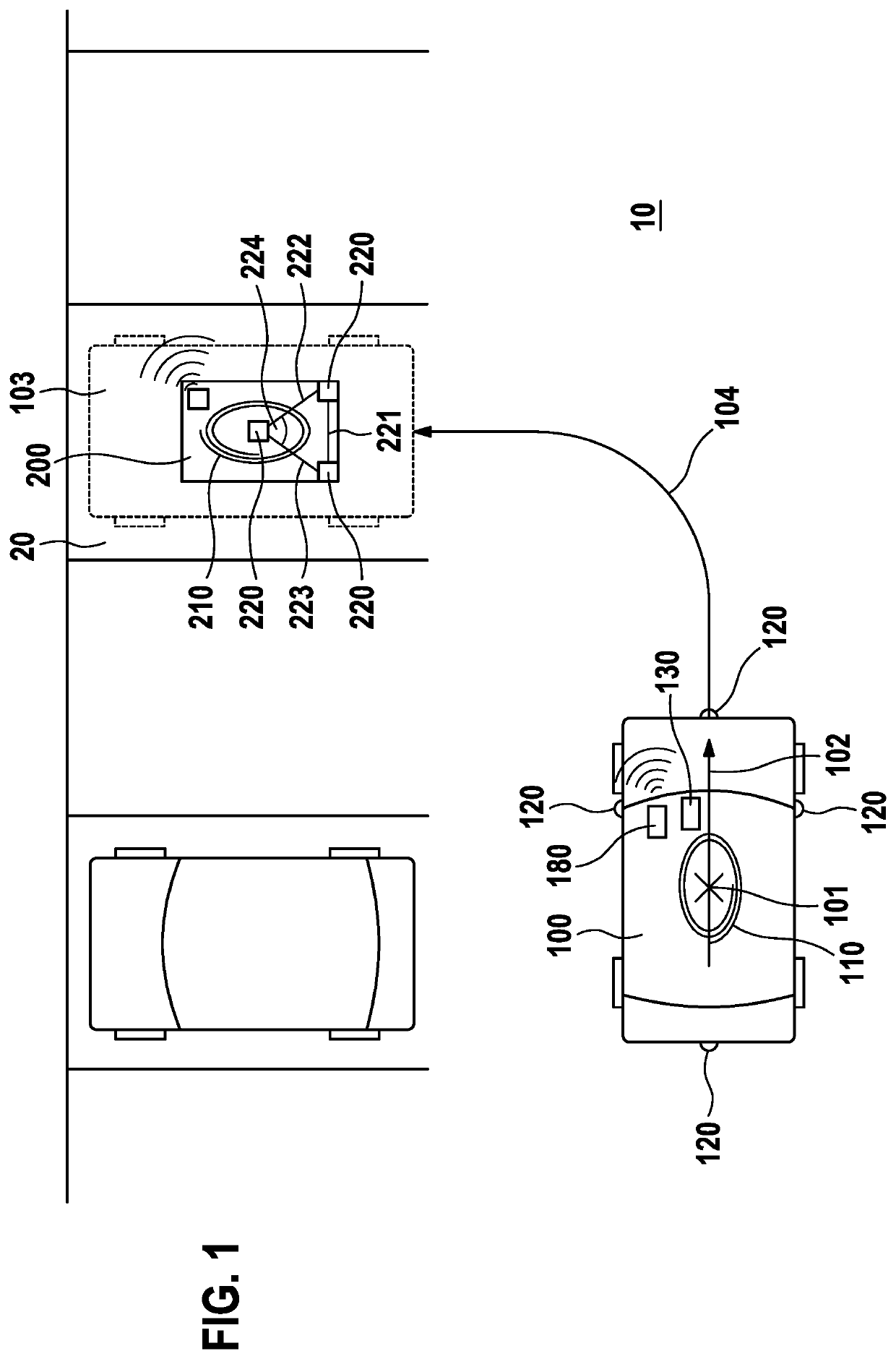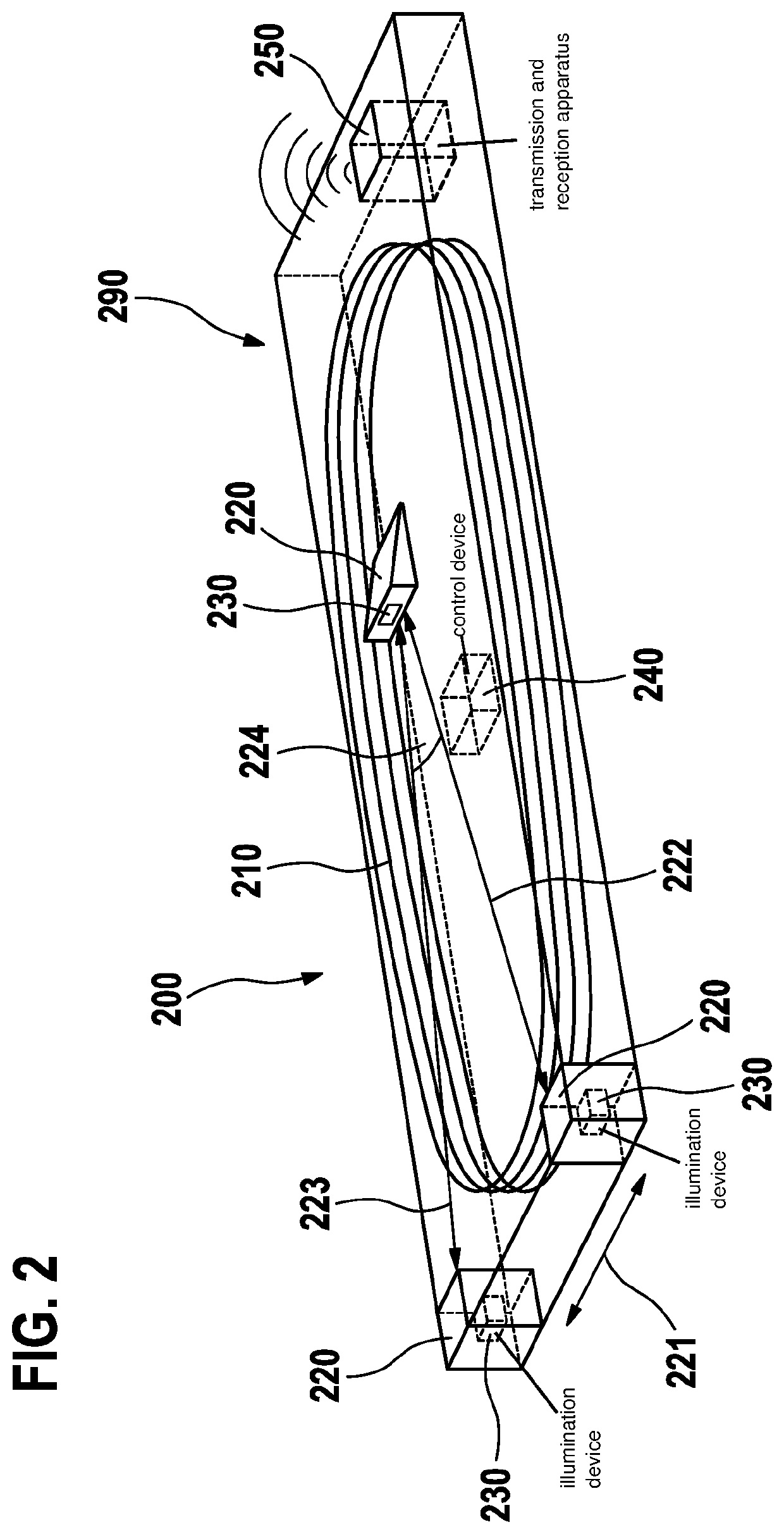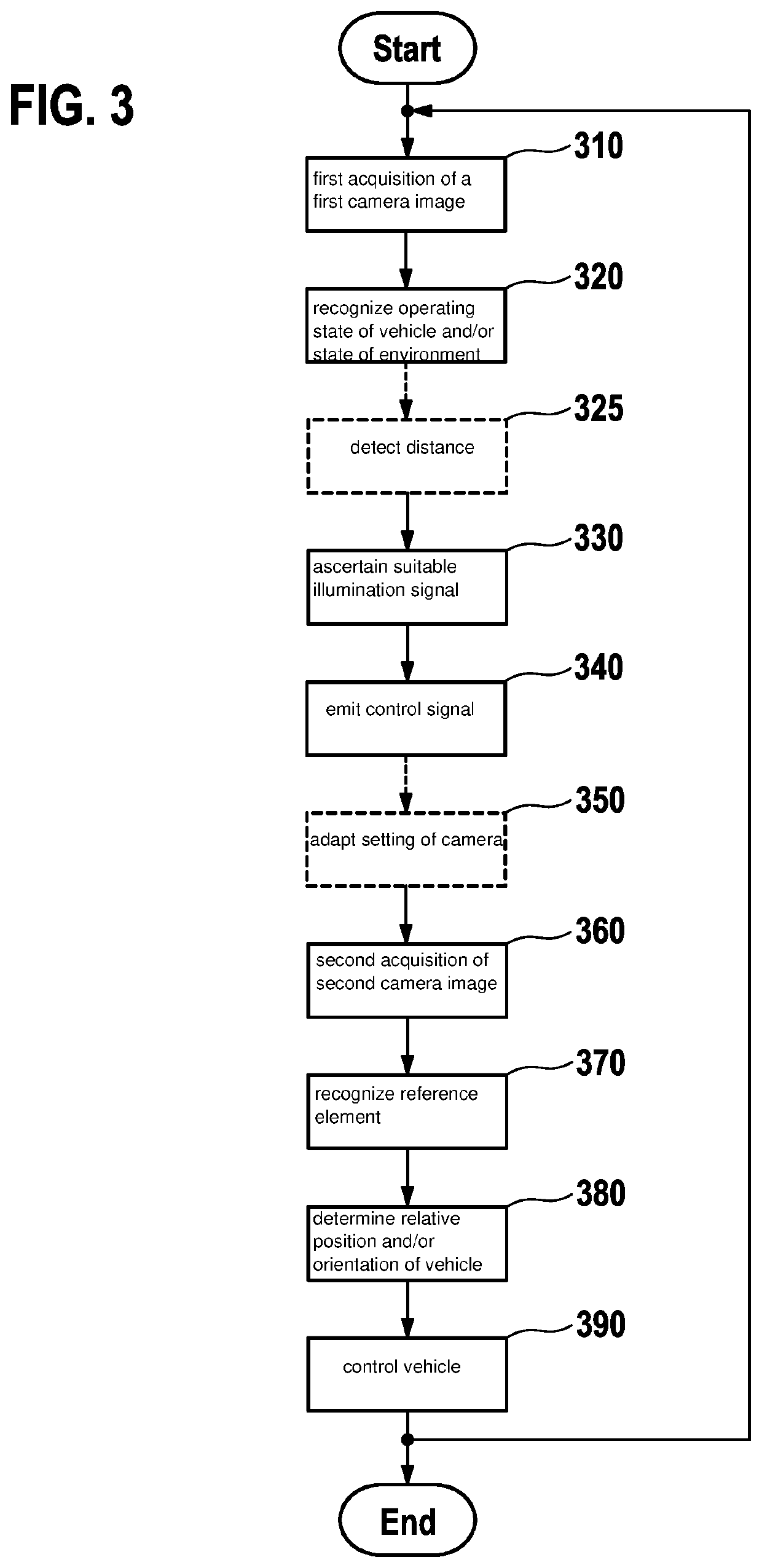Method for positioning a vehicle, control device of the vehicle, and vehicle, and method for controlling an inductive charging station, control device of the charging station, and charging station
a technology for positioning vehicles and charging stations, which is applied in the direction of charging stations, electric vehicle charging technology, transportation and packaging, etc. it can solve the problems that manual guidance of vehicles to inductive charging stations would in many cases not achieve the accuracy, tolerances or accuracy of satellite-assisted positional determination, etc., and achieve the effect of saving energy for operating inductive charging stations and enhancing vehicle positioning
- Summary
- Abstract
- Description
- Claims
- Application Information
AI Technical Summary
Benefits of technology
Problems solved by technology
Method used
Image
Examples
Embodiment Construction
[0022]FIG. 1 is a schematic plan view, or view from above, of a vehicle 100 having an inductive charging coil 110 approaching an inductive charging station 200. Inductive charging station 200 is disposed, for example, in or on the substrate of a road surface of a parking space, so that a vehicle 100 having an inductive charging coil 110, which is advantageously disposed on the bottom of vehicle 100, can be parked or positioned over or above the inductive charging station. In FIG. 1, vehicle 100 is at a first position 101 and has an alignment or orientation 102 in a travel direction of the vehicle. Both position 101 and alignment 102 are intended to be modified for efficient inductive energy transfer between vehicle 100 and charging station 200, the vehicle being guided automatically, along a trajectory 104 that is to be determined, into an energy-efficient parked position 103 depicted with dashed lines in FIG. 1. This parked position 103 is to be arrived at as accurately as possible...
PUM
 Login to View More
Login to View More Abstract
Description
Claims
Application Information
 Login to View More
Login to View More - R&D
- Intellectual Property
- Life Sciences
- Materials
- Tech Scout
- Unparalleled Data Quality
- Higher Quality Content
- 60% Fewer Hallucinations
Browse by: Latest US Patents, China's latest patents, Technical Efficacy Thesaurus, Application Domain, Technology Topic, Popular Technical Reports.
© 2025 PatSnap. All rights reserved.Legal|Privacy policy|Modern Slavery Act Transparency Statement|Sitemap|About US| Contact US: help@patsnap.com



